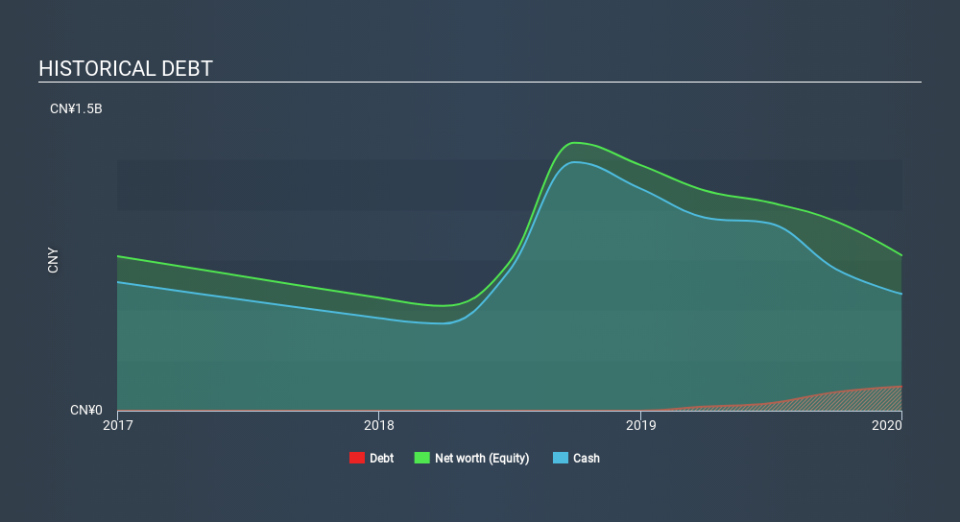Is 111 (NASDAQ:YI) Using Debt In A Risky Way?

Some say volatility, rather than debt, is the best way to think about risk as an investor, but Warren Buffett famously said that 'Volatility is far from synonymous with risk'. So it seems the smart money knows that debt - which is usually involved in bankruptcies - is a very important factor, when you assess how risky a company is. Importantly, 111, Inc. (NASDAQ:YI) does carry debt. But should shareholders be worried about its use of debt?
When Is Debt A Problem?
Generally speaking, debt only becomes a real problem when a company can't easily pay it off, either by raising capital or with its own cash flow. In the worst case scenario, a company can go bankrupt if it cannot pay its creditors. However, a more common (but still painful) scenario is that it has to raise new equity capital at a low price, thus permanently diluting shareholders. Of course, debt can be an important tool in businesses, particularly capital heavy businesses. When we examine debt levels, we first consider both cash and debt levels, together.
Check out our latest analysis for 111
What Is 111's Debt?
The image below, which you can click on for greater detail, shows that at December 2019 111 had debt of CN¥120.7m, up from none in one year. However, its balance sheet shows it holds CN¥581.3m in cash, so it actually has CN¥460.6m net cash.
How Strong Is 111's Balance Sheet?
The latest balance sheet data shows that 111 had liabilities of CN¥773.4m due within a year, and liabilities of CN¥62.9m falling due after that. On the other hand, it had cash of CN¥581.3m and CN¥259.6m worth of receivables due within a year. So its total liabilities are just about perfectly matched by its shorter-term, liquid assets.
Having regard to 111's size, it seems that its liquid assets are well balanced with its total liabilities. So it's very unlikely that the CN¥4.44b company is short on cash, but still worth keeping an eye on the balance sheet. Succinctly put, 111 boasts net cash, so it's fair to say it does not have a heavy debt load! When analysing debt levels, the balance sheet is the obvious place to start. But it is future earnings, more than anything, that will determine 111's ability to maintain a healthy balance sheet going forward. So if you're focused on the future you can check out this free report showing analyst profit forecasts.
Over 12 months, 111 reported revenue of CN¥4.0b, which is a gain of 121%, although it did not report any earnings before interest and tax. So there's no doubt that shareholders are cheering for growth
So How Risky Is 111?
Statistically speaking companies that lose money are riskier than those that make money. And we do note that 111 had negative earnings before interest and tax (EBIT), over the last year. Indeed, in that time it burnt through CN¥537m of cash and made a loss of CN¥500m. But at least it has CN¥460.6m on the balance sheet to spend on growth, near-term. Importantly, 111's revenue growth is hot to trot. While unprofitable companies can be risky, they can also grow hard and fast in those pre-profit years. The balance sheet is clearly the area to focus on when you are analysing debt. But ultimately, every company can contain risks that exist outside of the balance sheet. Case in point: We've spotted 1 warning sign for 111 you should be aware of.
At the end of the day, it's often better to focus on companies that are free from net debt. You can access our special list of such companies (all with a track record of profit growth). It's free.
If you spot an error that warrants correction, please contact the editor at editorial-team@simplywallst.com. This article by Simply Wall St is general in nature. It does not constitute a recommendation to buy or sell any stock, and does not take account of your objectives, or your financial situation. Simply Wall St has no position in the stocks mentioned.
We aim to bring you long-term focused research analysis driven by fundamental data. Note that our analysis may not factor in the latest price-sensitive company announcements or qualitative material. Thank you for reading.

